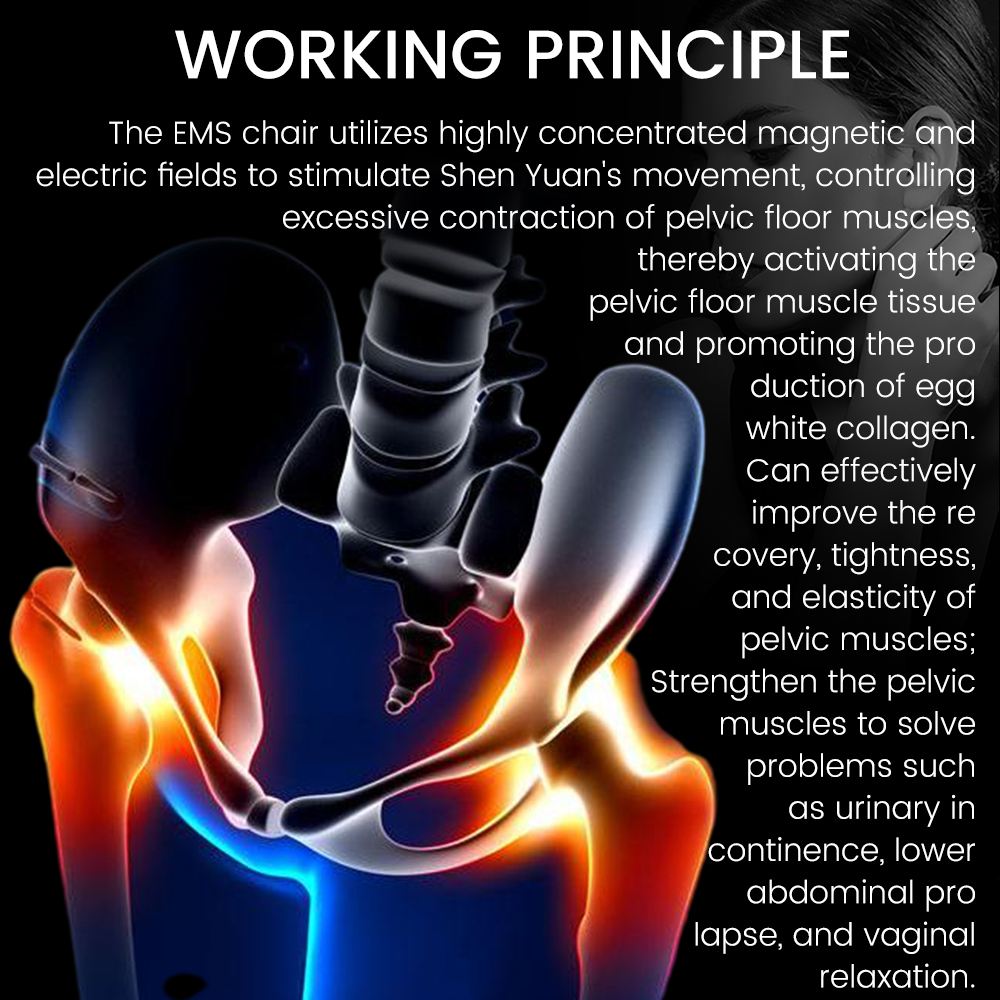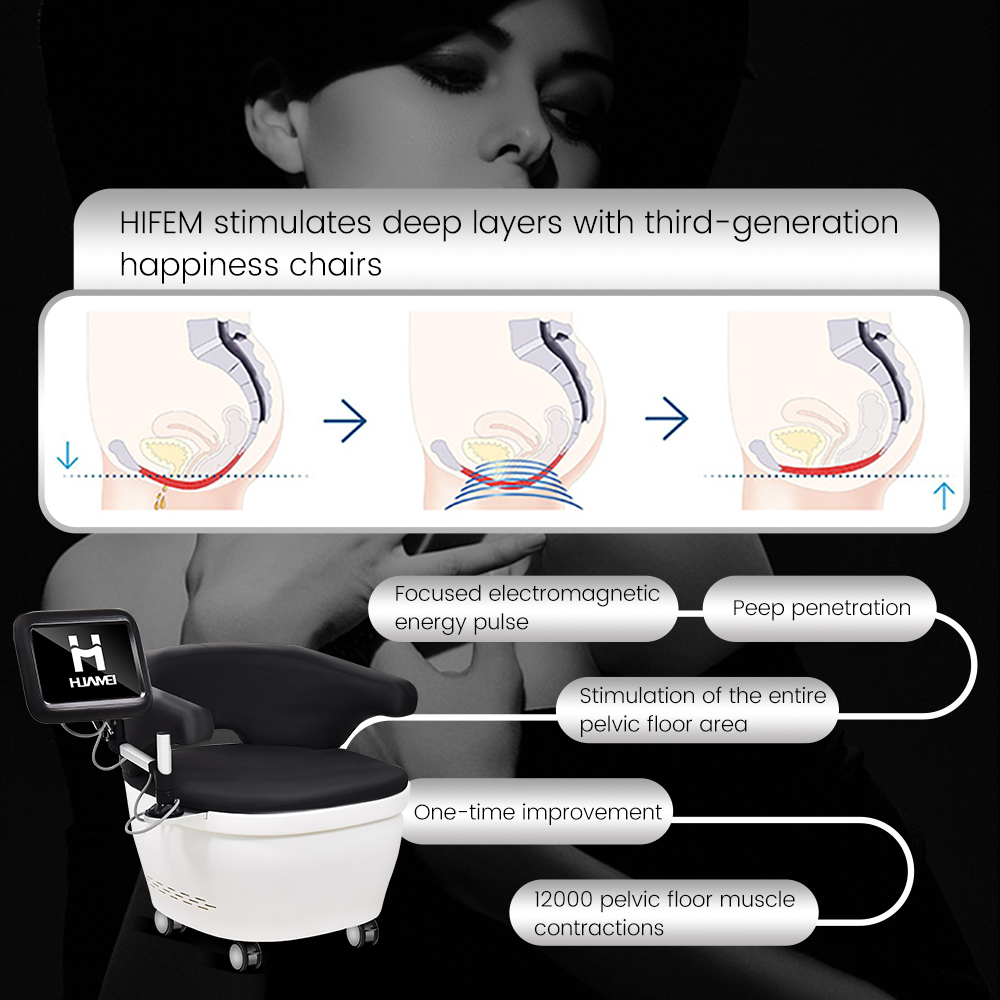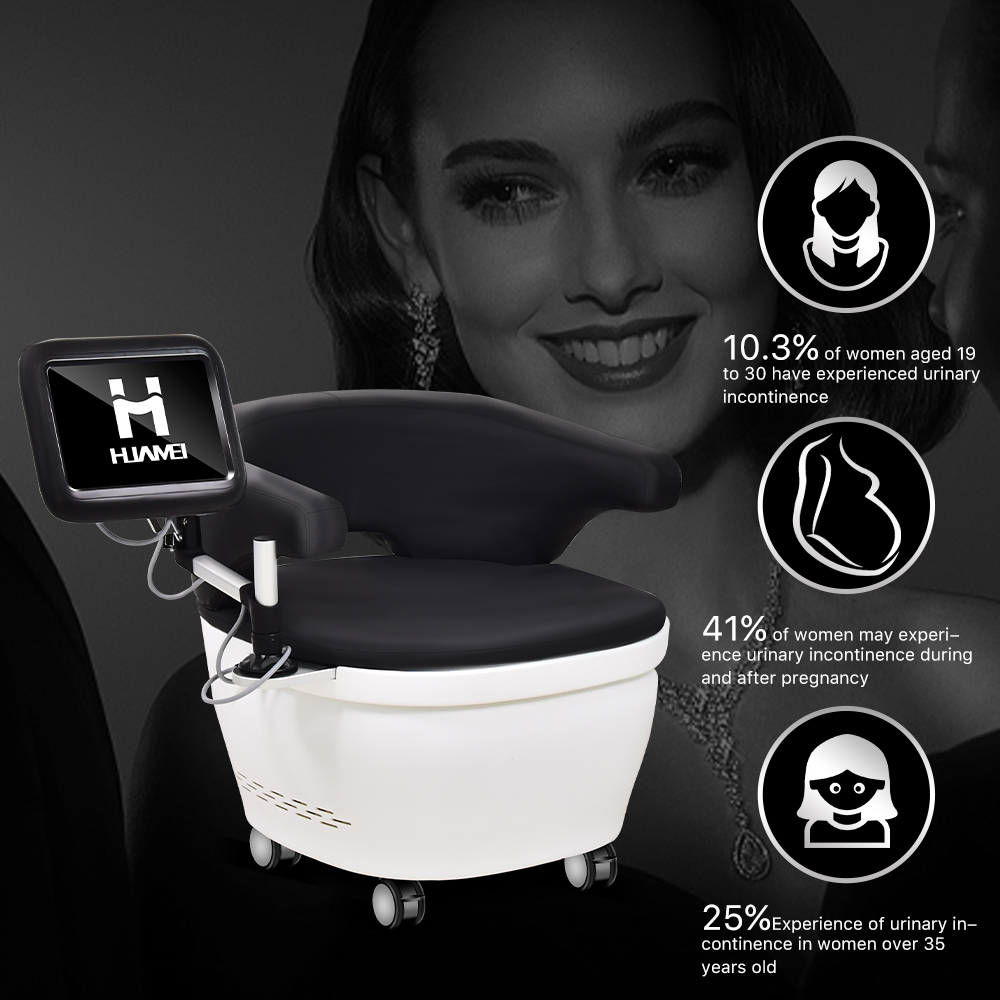HIFU Machine: The Non-Surgical Facelift Revolution for Salons
December 08, 2025The Role and Clinical Application of EMS Magnetic Chair in Pelvic Floor Muscle Relaxation and Recovery
March 21,2025
With aging, pregnancy, childbirth, and menopause, women’s pelvic floor muscles are prone to weakening, leading to issues such as urinary incontinence, vaginal laxity, and organ prolapse, which significantly impact quality of life. Traditional pelvic floor rehabilitation methods, such as Kegel exercises, physical therapy, and surgical interventions, often have slow results or involve some degree of invasiveness. In recent years, a non-invasive and highly effective treatment—the EMS Magnetic Chair (High-Intensity Focused Electromagnetic technology, HIFEM)—has gained popularity in pelvic floor rehabilitation, offering women a safe, convenient, and efficient treatment option.

Working Principle of the EMS Magnetic Chair
The EMS Magnetic Chair utilizes High-Intensity Focused Electromagnetic (HIFEM) technology, a non-invasive treatment method that generates a strong electromagnetic field to stimulate the pelvic floor muscles, inducing muscle contractions to strengthen and tighten the muscle fibers. Its main mechanisms of action include:
- High-Frequency Muscle Stimulation: The EMS Magnetic Chair can induce over 12,000 supramaximal muscle contractions within 30 minutes, far exceeding what voluntary exercises, such as Kegel exercises, can achieve.
- Neuromuscular Re-education: The high-intensity electromagnetic field directly stimulates motor neurons, activating more muscle fibers and improving pelvic floor function.
- Improved Blood Circulation: Electromagnetic stimulation enhances local blood flow, increasing tissue oxygenation and accelerating muscle repair and regeneration.

Effects of the EMS Magnetic Chair on Pelvic Floor Muscle Relaxation
- Prevention and Improvement of Stress Urinary Incontinence
Stress urinary incontinence occurs when weakened pelvic floor muscles fail to support the urethral sphincter, causing involuntary urine leakage during coughing, laughing, or exercising. The EMS Magnetic Chair effectively strengthens these muscles, restoring bladder control and reducing incontinence symptoms.
- Postpartum Recovery
Childbirth, particularly vaginal delivery, can cause significant pelvic floor damage, leading to vaginal laxity and organ prolapse. The EMS Magnetic Chair provides high-intensity muscle stimulation, helping postpartum women regain pelvic floor strength, improve vaginal tightness, and enhance bladder support.
3. Prevention and Improvement of Pelvic Organ Prolapse
Severe pelvic floor weakness can lead to prolapse of the uterus, bladder, or rectum, affecting daily life. The EMS Magnetic Chair strengthens pelvic floor support, reducing the risk of organ prolapse and potentially helping patients with mild prolapse avoid surgery.
4. Alleviation of Menopausal Pelvic Floor Dysfunction
Menopausal women often experience decreased estrogen levels, leading to reduced pelvic floor elasticity and tone, resulting in urinary incontinence and sexual dysfunction. The EMS Magnetic Chair helps counteract muscle deterioration, improving endurance and contractile function.

Clinical Applications of the EMS Magnetic Chair
- Obstetrics, Gynecology, and Postpartum Recovery Centers
The EMS Magnetic Chair is widely used in postpartum rehabilitation, offering effective pelvic floor recovery solutions in hospitals and rehabilitation centers.
- Urology and Rehabilitation Medicine
For patients suffering from urinary incontinence and pelvic floor disorders, urology and rehabilitation medicine departments often adopt the EMS Magnetic Chair as a non-invasive treatment option.
- Aesthetic Clinics and Women’s Health Centers
Since the EMS Magnetic Chair improves both pelvic health and sexual function, it is increasingly popular in aesthetic and women’s wellness clinics.
- Sports Rehabilitation Facilities
Athletes or women engaged in high-intensity physical activity may experience pelvic floor dysfunction due to muscle overuse or injury. The EMS Magnetic Chair is beneficial in restoring muscle function in these cases.

Advantages of the EMS Magnetic Chair
- Non-Invasive, Safe, and Painless
Unlike surgical interventions, the EMS Magnetic Chair requires no incisions or anesthesia. Patients simply sit on the chair fully clothed, making the treatment comfortable and widely acceptable.
- High Efficiency and Convenience
Each session lasts only 30 minutes, delivering the equivalent of 12,000 Kegel exercises. Generally, 2-3 sessions per week for 6-8 weeks are recommended to achieve significant improvement in pelvic floor function.
- Suitable for a Wide Range of Patients
Whether postpartum women, menopausal individuals, or athletes with pelvic floor dysfunction, the EMS Magnetic Chair offers a solution for various patient groups.
- No Downtime or Special Post-Treatment Care
Patients can immediately resume daily activities after treatment, with no need for recovery time.
- Long-Lasting Results
Studies have shown that patients who complete an EMS Magnetic Chair treatment program maintain significantly improved pelvic floor strength for at least six months after treatment.

As an innovative, non-invasive pelvic floor rehabilitation technology, the EMS Magnetic Chair has emerged as a leading solution for women experiencing urinary incontinence, pelvic muscle weakness, and sexual dysfunction. Its ability to deliver rapid, safe, and effective results makes it a valuable addition to postpartum recovery, menopausal care, and overall pelvic health management. As awareness of women’s health continues to grow and medical technology advances, the EMS Magnetic Chair is expected to play an increasingly important role in clinical settings, offering lasting benefits to women worldwide.
